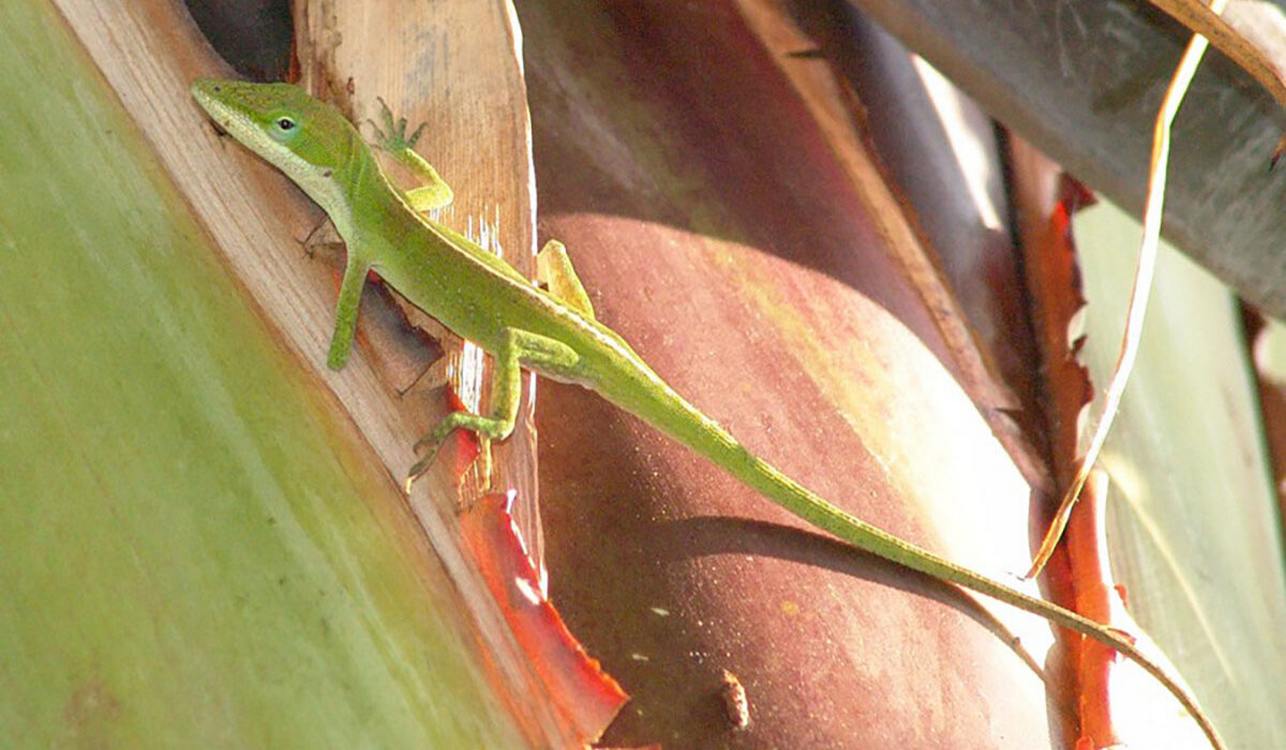 An amputee American green anole – credit, Tony Gamble supplied to Washington University
An amputee American green anole – credit, Tony Gamble supplied to Washington University
The Bahamas were once crawling with pirates, but have always been crawling with lizards.
Do the two have anything in common? Well, much like the old trope of pirates missing legs and hands, many of the lizards of the Bahamas are too.
The reason we know this is because there happened to be the right person in the right place with the right interests at the right time: Jonathan Losos—who began to notice that peg-legged lizards were pretty nimble.
In fact, after decades of study and a worldwide academic collaboration, Losos’ paper on the subject reveals that agility and capability was a trait possessed by over a hundred amputee lizards.
Losos first formed this ad-hoc study project when he was catching and measuring anole lizards (pronounced a-nole-ee) in the Bahamas over 20 years ago, and noticed a female who was missing part of her hindleg.
She was nonetheless speedy and agile, and it got Losos thinking how one could persevere at hunting and avoiding predators with such a debilitating injury. Joining with herpetologist James Stroud, Losos began corroborating field research on 58 different species observed over 100 times by some 50 scientists.
Published in a paper recently in the American Naturalist, Losos, Stroud, and dozens of co-authors present evidence that these “Pirates of the Caribbean (and other places)” can continue to plunder even after losing some or most of their hind or forelegs.
“You can’t help but be impressed by lizards that do well even when they lose a good chunk of a limb,” Losos, the William Danforth Distinguished University Professor at Washington University in St. Louis, told Wash. U news outlets. “They’re remarkably resilient.”
However resilient the anoles and other lizards may be, limb loss must be a significant predictor of mortality, and indeed just 1% of surveyed lizards during the study period had limb injuries. Unlike the tails of some lizard species like anoles and geckos, limbs do not grow back.
ALSO CHECK OUT: Endangered ‘Blue Dragon’ of the Caymans Roars Back from the Brink as Population Climbs Above 1,000
Nevertheless, when Losos and his many collaborators subjected the peg-legged lizards to speed tests, many proved not only as fast as their 4-legged kin, but even faster in some cases. Slow-motion video analysis showed how the lizards had altered their locomotion to swing their abdomens in greater arcs to the left and right which increased forward motion, adapting sometimes for a loss of a hindlimb, which is responsible for generating forward acceleration.
The tests confirmed what Losos had seen in the field: these lizards appeared fine.
MORE SCALY STORIES: World’s Smallest Snake Rediscovered in Barbados After 20 Years
“You can tell just by looking at them,” Losos said. “They’re fat and sassy, and clearly aren’t starving.”
The team in their paper posits that these lizards show that at least in some cases, natural selection isn’t as ruthless as Charles Darwin made it out to be, and that even substantial disfiguring injuries could be managed over long periods of time through on-the-spot adaptations.
SHARE This Great Story Of Life Finding A Way With Your Friends…

